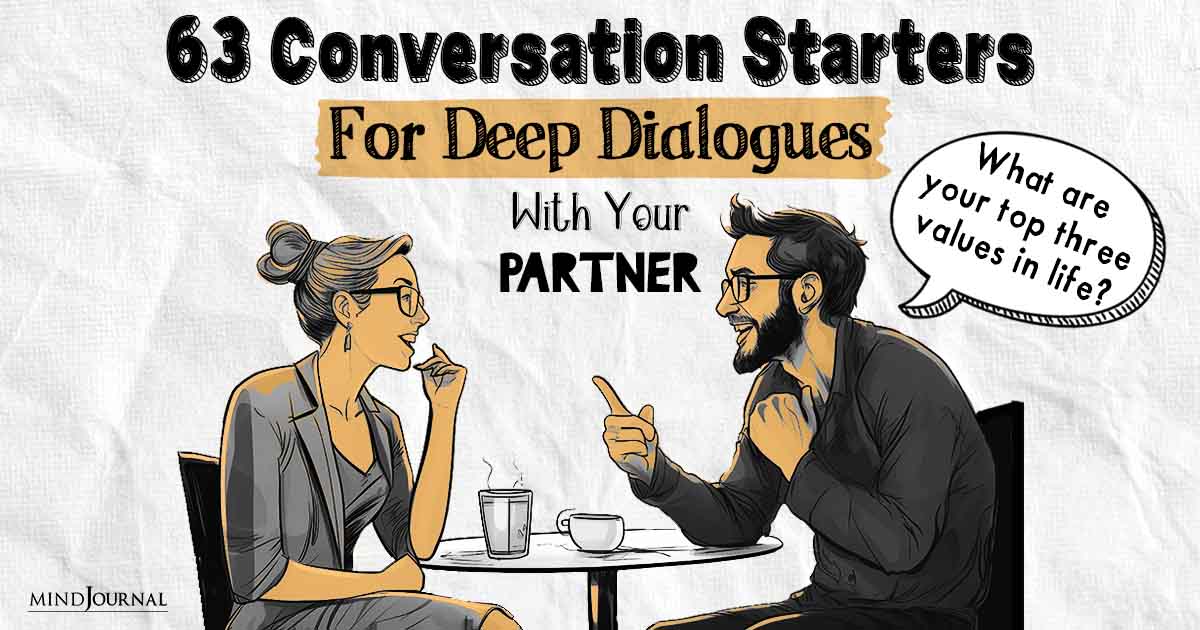Relationships can be complex and confusing. There are times you feel a soul connection, while at other times you don’t experience that level of intimacy, but deeply crave to be open with your partner. It may feel like the relationship is losing its spark and excitement and you just seem to coexist with each other. However, there are ways to light up that feeling of love and become more open with your partner.
Disclosure invites disclosure. There is no way to force someone to talk about him- or herself. We can only invite conversation by taking risks ourselves. Enjoying the transparency of another person is earned by building trust to the point where they know that their revelations will be treated with respect, and they trust that their disclosures will be met with reciprocity—a similar depth and breadth of the disclosure.
If you’ve lived long enough, life has given you aggravation, loss, betrayal, broken promises, exploitation, and suffering. And part of this probably came from relationships with people who meant something to us, who could not hear us, see us, respect us, or really love us because of their own limitations.
If we couldn’t see that the lack of fulfilling connection had a great deal to do with the other person, we may have decided that it was our feelings and the way that we expressed them that was the problem.
The only way to correct this perception is to begin practicing the art of revealing ourselves to those with who we are closest. If we create a contract with our partner or other intimate that states that this is our growing edge and we are making an alliance to become adept at intimately relating, they may be willing to enter into the joint project as well. This creates an ideal agreement where both partners pay attention to their inner life—what’s working and what’s not working.
Related: 12 Steps To Getting Your Partner To Open Up
6 Steps To Becoming More Open with Your Partner
1. We will create a contract to become lab partners, to practice straight talk, and become adept at intimately relating.
2. We both commit to paying attention to our inner life—what’s irritating, aggravating, causing resentment, sadness, guilt, fear, joy, and happiness—so that we can express our feelings and needs.
3. Recognizing that sunlight is the best disinfectant, we will encourage open communication by welcoming even painful truths.
4. We would rather hear a difficult truth rather than have withholding because we want to enjoy the maximum amount of trust available.
5. There are no topics considered “no-fly zones.” Every subject is open to exploration.
6. We are establishing a contract driven by an intention to heal, learn, and grow, so any truths spoken must be delivered with diplomacy, finesse, and caring. If harmlessness is the highest commitment, the kind and tactful way to deliver a message will become apparent.

Encouraging straight talk propels a relationship down the path of success. To explicitly invite honest communication encourages openness. The choice is to make a declaration that we would rather hear a difficult truth than have it fester below the surface causing damage. If we are willing, to tell the truth about what isn’t working for us in our relationship, the revelation will open up a new world of possibility.
Honesty is what allows us to address our real issues so that we can meet them head-on, interrupt old patterns, and experiment with new ones.
We have a vested interest in our partner’s success: If their needs are not met, their unhappiness will impact us. When we hold this truth in sharp focus, we want to do everything in our power to encourage their openness with us about any dissatisfaction they have.
It’s as if we make a contract with a major clause: Let’s put it all on the table where we can see it and work with it. Nothing is hidden.
“Those who have never known the deep intimacy and the intense companionship of mutual love have missed the best thing that life has to give.” – Bertrand Russell
Benevolent feedback, which is input with an intention to learn and to heal, is welcome. There should be no intention to make the other person feel bad or inadequate, nor an intention to dominate or get our way.
Related: 4 Practices To Build Intimacy In Relationships
A selfish agenda will tighten up communication. Understanding and cooperation is the goal; being willing to speak the truth and staying open to hear the truth are necessary for relationship success.
As we become better at expressing our inner feelings, a natural next step is to begin speaking about our needs and preferences—needs for touch, words of affirmation, sexual needs, how we spend time together, needs for separate time, and how we feel valued and special.
This practice has big payoffs, primarily in the form of a deeper understanding of who we are and who our partner is.
It results in that sweet feeling of being known and loved as we are, and the strong trust that we can talk about whatever is on our mind and in our heart. It is tremendously freeing to deal with difficult subjects that were once avoided because they seemed too dangerous.
The ultimate goal is to have no areas that we can’t address in some fashion. It is likely that we will make numerous attempts to know each other, and find that a lot of feelings come up because of the tender material there. But as trust builds, the ease with which we can touch formerly taboo subjects increases.
“Real intimacy; real love has to do with a joining of the mind, a joining of the spirit, a joining of the heart.” – Marianne Williamson
With some topics, it may never actually get easy; it may remain daunting. But it is progress if we notice that there is a bit more breathing room, less fear and reactivity, and more understanding. The rawness of being on the edge of the discovery of self and others is an acquired taste. It is a bit scary, but the excitement, enthusiasm, aliveness, enjoyment, and vitality make it worth the risk and effort. Don’t take my word for it; try it and find out for yourself.
Here’s an interesting video on how you can become more open with your partner:
Written by Linda and Charlie Bloom Originally appeared in Psychology Today










Leave a Reply